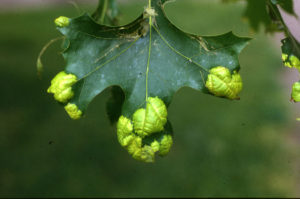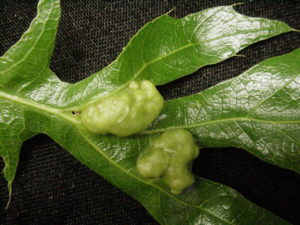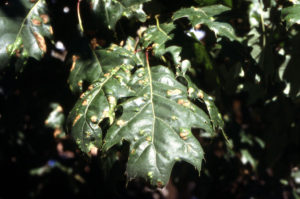Oak leaf blister is caused by the fungus Taphrina caerulescens. Infections occur as buds swell and open during wet, spring conditions. Leaf blister symptoms usually appear within several weeks following infection as 1/4-1/2 inch circular, light green bulges on the top surface of leaves.(Fig 1) From the underside, the affected areas are sunken or depressed. These distortions may cause leaf bending or curling of narrow-leaved oak species. Some insect galls may resemble symptoms of oak leaf blister at first glance. (Fig 2) Upon closer inspection, the insect gall is a solid mass of leaf tissue as opposed to the distorted leaf blister caused by Taphrina. As the blisters age, they become dry, brown spots; severely diseased leaves may drop prematurely. (Fig 3.) Although this disease is quite conspicuous, it does not seriously harm healthy trees and control with fungicides is not usually recommended.
- Fig 1. Blister-like bulge on oak leaf caused by Taphrina
- Fig 2. Look-alike leaf distortion on oak caused by insect gall
- Fig 3. Oak leaf blister symptoms on older leaves


